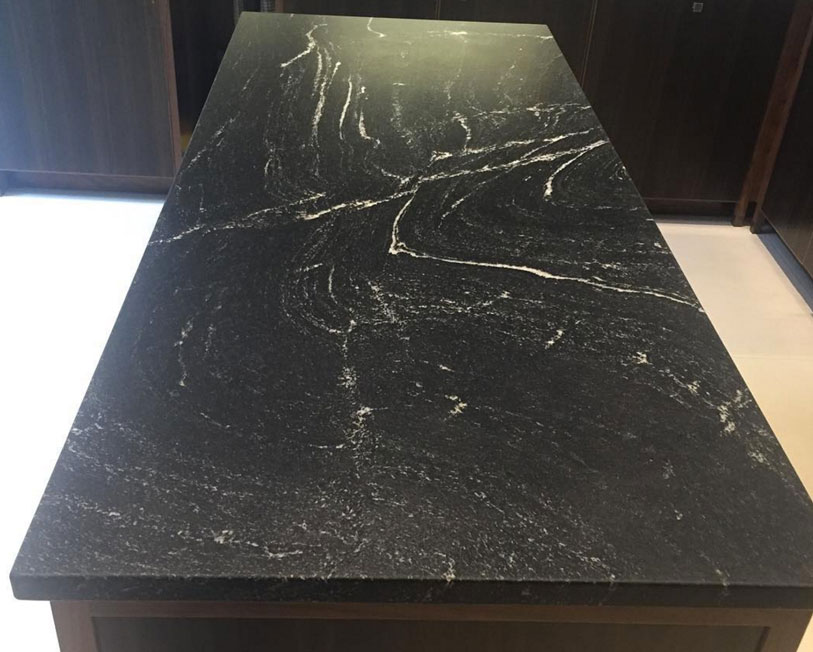Last Updated on May 31, 2019 by Royal Stone Care
Restoration
The cure for etching very much depends on each individual situation. Mostly this consists of rubbing the marble down properly and re-applying the protective coating it once had. Just covering up the marking with polish doesn’t really work. As I found out, when I was learning how to restore a proper shine to a marble surface, it’s a bit of a specialist job really. Someone who’s practiced a while. Unless you really want to find out for yourself how difficult it can be, I’d suggest giving the Royal Stone office a call. They will be able to advise on your individual circumstances.
Damage limitation
Prevention is a lot easier to carry out for yourself. Floors and shower rooms in the home are fairly easy to keep looking good. Make sure no outdoor footwear is used when walking over marble floors. Keep the floors well-polished with a suitable reputable polish that does not contain any acids or limescale removers. Be careful not to overdo it though. If you do, a thick film of polish can build up and this tends to discolour the surfaces. Only sweep, mop or wipe your floors. Even vacuum cleaner brushes, as well as the hose and the machine itself can scratch finely polished marble. Do not drop any acidic products on the floors. Not so easy in commercial premises. Here it’s just a case of keep the floors washed, clean and polished regularly. Perhaps enhanced with an annual deep clean and polish from the services of Royal Stone.
Caring for wet areas
Give shower rooms the same treatment as you would for preventing mould attacking. Wipe excess water from all surfaces, especially the grouting, immediately after taking a shower. All domestic mains water carries all sorts of minerals, salts and minute particles in it. Including the dreaded limestone that causes limescale. When you leave the water to dry naturally on showers, baths, sinks, shower screens and all the surrounding areas that get wet, the water evaporates back into the atmosphere leaving the heavier particles behind. These form a film of residue on all those surfaces.
Even though you might make the effort to dry the surfaces and slow the film developing, this film needs to be removed on a regular basis. Here is a tip passed on to me by a bathroom specialist.
Once or twice a month, or even weekly if necessary, wash all surfaces down with a mix of liquid soap (washing up liquid) and small amount of bi-carb of soda. This is how to do it: –
Over the areas to be cleaned, sprinkle on a little liquid soap followed by a small sprinkling of bicarbonate of soda. Using a damp cloth rub and mix the two cleaning agents over the surfaces to remove the film. With careful observation, you will feel the film of residue providing some resistance to your rubbing at first. Having rubbed all the surfaces, rinse them down with clean water. We use our shower head to do this as it is on a flexible hose. Not all showers are. Once rinsed off, dry the area with a cloth. We use microfiber cloths as not only are they so serviceable, they clean and dry better too. When finished, you will see the shine back and you will no longer get that residue resistance when rubbing your cloth over the areas.
Protecting your worktops
On worktops and table tops, never put anything hot straight on to the marble surface. Always use a mat or a trivet. In fact, it is a good idea to use a mat or some sort of waterproof surface cover for the more heavily used areas of your worktops. It is now possible to get things called ‘furniture pads’ specifically designed for such use. Those silicone mats that are used in domestic ovens to catch spillages are useful in this role if you can’t find a furniture mat supplier.
A final reminder
It is becoming fashionable for carers of the environment to avoid commercials cleaners and use a mix of vinegar, water and lemon juice as a cleaner. Please DO NOT do this. Both the lemon juice and the vinegar will cause serious etching. Not only does this dull the surface of the marble but also allows stains to go deeper into the surface and, in many cases, become impossible to remove. After etching, staining is the big problem for marble owners. So in a future post I’ll give you some tips on how to deal with those.

